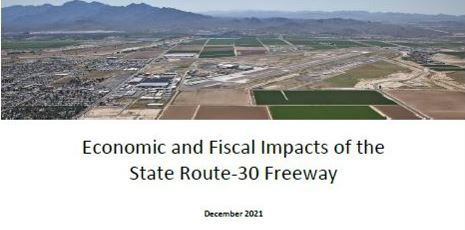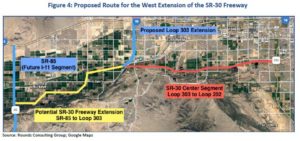
For many of us we have been hearing about the SR-30 for several years. We had an ADOT update a few years ago and as the West Valley keeps growing it is clear the industrial and manufacturing backbone needs its own freeway to efficiently route trucks and materials efficiently.

As you may remember, the SR-30 was planned to extend from SR-85 in Buckeye to the south loop of the I-17 in Phoenix crossing through the Loop 303 and Loop 202. That was until a few months ago when we realized the SR-85 to Loop 303 leg was taken off ADOT maps, but still remained on MAG maps.
So, we wondered: “What would happen if the SR-30 was not built as originally planned?” Were there any economic, job and housing concerns that could pop up? Were there lost opportunities and other “unforeseen consequences” of limiting the SR-30?
In the Fall of 2021 WeSERV hired Rounds Consulting Group to help us determine what, if any, negative or positive consequences there would be to various SR-30 buildout scenarios. We began with no build at all. What happens if SR-30 just never gets built?
We then progressed through 3 other scenarios ending with a fully built our SR-30 as originally planned. While the economic development numbers and job creation numbers are striking between all the scenarios, we also look at potential lost opportunities over time.
Our time horizon was 50 years. What ramifications to future generations living in the West Valley might there be, positive and negative? Starting with the basics, no one wants to sit in hours of traffic everyday just to get to work, school and grocery shopping. No one wants to pay ever increasing taxes to maintain roadways never intended for heavy truck traffic. And no one wants eminent domain to be a conversation after several decades of growth.
To begin your assessment of the SR-30 and its economic impacts, read our study the Economic and Fiscal Impacts of the State Route -30 Freeway.
